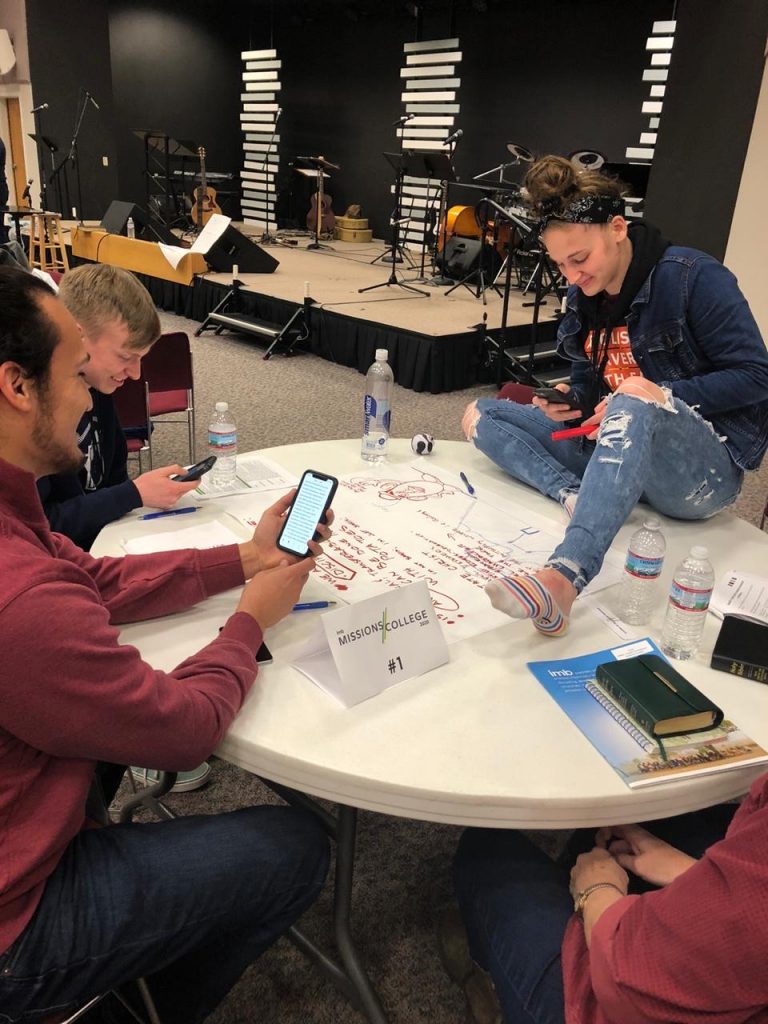
Young adults of Latin America have grown up wired, as in many other cultures. They use smart phones to interact but not just when they are apart. Young people in the same room text each other, simultaneously following separate chats, interacting over shared photos and videos. They use phones to check webpages for homework assignments and they email one-paragraph reports to teachers who cut to the chase in lectures, preparing students to communicate in the soundbites of a digital world. As they enter the workforce, they use smart phones on the job. And to relax? Video games and movies are on that same mobile device.

IMB missionary Matt Ostertag understands that leading young Latinos to Jesus is likely to happen through their phones. Ostertag and his colleagues are developing a project to flood social media with Christ-centered content that touches issues concerning Latino students and young adults. The team recognizes the need for a new method of presenting the gospel and is leveraging cyberspace to reach this tech-dominant generation.
Ostertag’s team will develop short gospel videos that springboard off current digital conversation topics. For example, in Guadalajara, where Ostertag lives, young people fear violent crime. They also are disillusioned with once-promising politicians who turned out to be corrupt. Ostertag’s videos will use this topic as a bridge to the gospel. Videos will include a pop-up window inviting viewers to chat with counselors. Christians will direct viewers to local events, such as evangelistic concerts, where they will hear more about Christ. The campaign’s trajectory will eventually connect interested young people to local churches.
Digital content that presents the gospel is relevant not only to people who don’t know the Lord. It is also a tool that helps Christians share their faith.

Ostertag describes the Mexican young adults, mostly in their 20-40s, he disciples.
“They don’t like to tell stories, they don’t like to read much, though they can,” Ostertag says.
If disciple-makers use material that connects with young adults’ technology-based communication patterns and learning styles, their students “can get the gospel deeper, and they can share it with others,” he says.
“The issue is not that urban people don’t want to share the gospel,” Ostertag emphasizes. “[It’s that] they don’t know how. They are scared. They feel inadequate in their knowledge.” During accountability sessions, when Ostertag asks those he disciples who they have shared the gospel with, they say they need to learn more first. When opportunities come, young people find themselves unable to explain biblical truths they have received from literate or orality-based methods. They grasp enough to embrace the gospel but not enough to articulate it to a peer outside the faith.
“They are not able to learn well enough by the means we are providing to them,” Ostertag confesses.
Discipleship methods need to fit the learning style and worldview orientation of the people missionaries are trying to reach. In the case of urban young adults, incorporating digital content puts the teaching in their grasp, and offering digital methods for sharing biblical teaching equips them to lead others to Jesus.
Volunteer opportunities
There is an urgent need for young people who understand Latin culture, who speak via tech-based methods themselves, and who can create videos that communicate the gospel. Latino or Third Culture Kids, for example, could transmit the gospel via means that reach those speaking fluent tech. We’ve a story to tell to the nations. Let’s tell it in a communicable way. If you have interest in being a part of this approach, please email [email protected].

